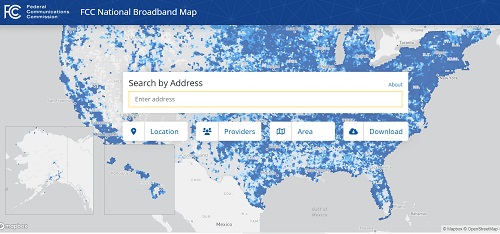Earlier this week, the Federal Communications Commission (FCC) released its second iteration of a national broadband map providing data for those stakeholders who are working to expand high-speed internet access across the United States.
The map – which will be used to decide each state’s allocation from the $42.5 billion Broadband Equity Access and Deployment (BEAD) program –– reflects coverage data providers submitted by the end of 2022 along with nearly 4 million challenges from consumers, states, localities and Tribes.
More than 75 percent of the challenges have been resolved, resulting in an increase of 1 million broadband serviceable locations.
The new map shows that more than 8.3 million U.S. homes and businesses lack access to high-speed broadband.
The National Telecommunications and Information Agency (NTIA), which will administer the BEAD funding, released its own statement calling the latest version of the map “the most accurate depiction of broadband availability in the FCC’s history.”
However, the overall national story “remains consistent,” the NTIA said. “From version 1 to version 2 of the FCC’s map, the percentage of unserved locations nationwide increased by 0.2 percentage points.”
The new version of the map, in addition to the FCC’s work to resolve availability challenges, will be used as the basis for the state allocations for the BEAD program. The NTIA said it is on track to announce those allocations by June 30.
“NTIA is confident that with this data as a baseline, we will be able to effectively allocate funds by the end of June,” the agency said. “We will continue to monitor the FCC’s updates to availability data to ensure that we make a well-informed allocation of these vital funds.”
The FCC’s broadband map tells the success story of the vibrant and growing internet service provider (ISP) broadband industry, according to a statement released by WISPA, the Wireless Internet Service Providers Association.
“WISPs have played an important and essential role in narrowing the gap, especially in rural, under-resourced and Tribal parts of America,” the statement said. “WISPs deliver a diverse array of connectivity solutions – such as fiber and fixed wireless technologies – to marketplaces left behind or ignored by legacy providers. They serve millions of Americans in the toughest reaches of our country. Their efforts quickly, cost-effectively and reliably bridge the digital divide.”
Another organization that weighed in on the FCC’s action was INCOMPAS, the internet and competitive networks association.
“Vast resources are allocated to bringing broadband to every corner of the country and connecting Americans everywhere,” said Chip Pickering, INCOMPAS CEO. “It is critical that the maps directing this process are as accurate as possible to ensure we meet the needs of the country and build new networks to unserved and underserved areas.”
Pickering added that INCOMPAS is pleased with the revised map, calling it essential in assisting NTIA in determining state allocations for the BEAD Program.
“We are experiencing a truly transformative moment for our industry and our country and must keep the momentum going to bridge the digital divide,” Pickering said, adding INCOMPAS looks forward to working with the FCC, NTIA, state andlocal broadband offices to ensure the map improves and reflects the locations where high-speed broadband networks are deployed to unserved and underserved locations.”










